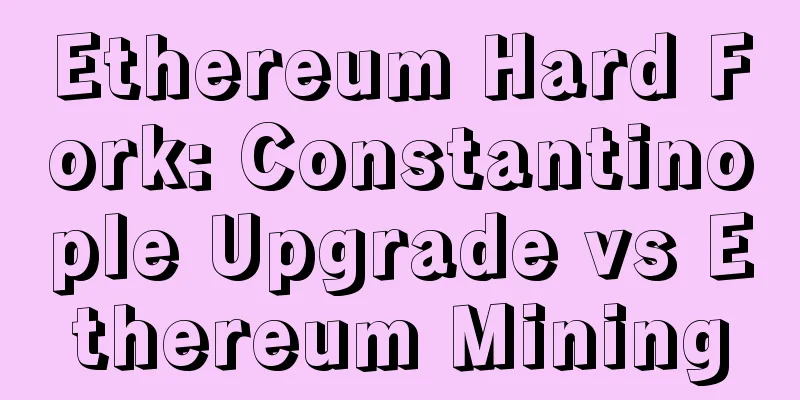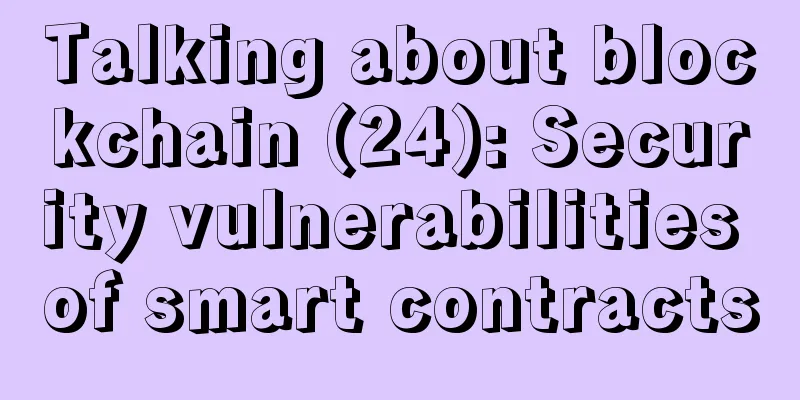Ethereum Hard Fork: Constantinople Upgrade vs Ethereum Mining

Editor's note: The Ethereum Constantinople hard fork upgrade scheduled for January 16, 2019 will adjust the block reward again (from 3 ETH to 2 ETH), which is another adjustment after the block reward was reduced from 5 ETH to 3 ETH in 2017. It is undeniable that this adjustment is to prepare for the implementation of the PoS mechanism in the Ethereum Serenity phase, which is an inevitable choice for the development of Ethereum. Will this adjustment have the same impact on Ethereum miners as the last one? What will Ethereum developers face after implementing this adjustment? We all know that mining in the Ethereum network will end when the PoS mechanism is implemented in the future (when the Ethereum network's validators replace the current miners), which is the inevitable result of changing the consensus mechanism from PoW to PoS in the Ethereum development roadmap. Although miners still have mines to mine before Ethereum completely switches to the PoS mechanism, some decisions regarding this Ethereum hard fork upgrade will inevitably have some impact on the miners of the Ethereum network. Okay, now that we have reviewed the past, let’s return to the present. EIP145 : This proposal was proposed by Alex Beregszaszi and Paweł Bylica, and is basically "to provide native bitwise shifting at the same cost as other arithmetic operators." If you are not a developer, this EIP proposal will have little or no impact on most people, so if you don't understand what the quote means, don't worry (I don't quite understand it myself...) EIP1014 : This proposal was put forward by Ethereum founder Vitalik Buterin. It mainly "allows interaction with addresses that do not yet exist on the chain but are still reliable (on real or virtual channels). This address and the code it contains can only be ultimately generated by a specific initialization code snippet." If you are not a developer, you don’t need to care too much about this change. EIP1052 : This proposal was proposed by Nick Johnson and Paweł Bylica, and its main purpose is to "add a new operator that returns the keccak256 hash of the contract code." This EIP proposal will allow smart contracts to perform bytecode inspection in a more cost-effective and efficient way. EIP1283 : This proposal was put forward by Wei Tang. Its main purpose is to "adjust the net gas metering of the SSTORE opcode, optimize the storage algorithm, and reduce the GAS consumption of smart contract storage." This is a proposal to improve the Ethereum network and solve the problem of high gas consumption. It is very beneficial from a macro perspective. EIP1234 : This proposal was proposed by Afri Schoedon. It is mainly to delay the difficulty bomb of Ethereum network mining and reduce the block reward from 3 ETH to 2 ETH. This proposal is the focus of this article. Let's analyze this proposal together. Despite this, the resources currently spent on Ethereum mining are still very huge. At present, in addition to the Bitcoin network, the Ethereum network still has the largest computing power. A large part of the Ethereum network computing power comes from small miners and mining equipment around the world. But all that is about to change. Wait, when some miners stop mining on the Ethereum network, won’t the mining difficulty readjust? Yes, but this will face a new threat. To reiterate: as small GPU miners leave the Ethereum network, it won’t be long before there are mining farms using ASIC miners to mine on the Ethereum network (just as there were in Bitcoin’s history). https://www.youtube.com/watch?v=iSc3TbjZu1k&feature=youtu.be&t=3171 One of the developers, “Mr Else,” noted that current ASIC miners for the Ethash algorithm are only “slightly better” than regular GPU miners — but that the next generation of ASIC miners will be “2x better than GPU miners. ” The developers went on to call the competition between GPU manufacturers and ASIC companies a “slow arms race.” The end result of the meeting was that they would implement ProgPoW in the future, provided there were no critical issues with the largely untested mining algorithm. However, this could take many months to implement, not to mention the organizational and resource hassles that would be required to carry out the next hard fork. The fact is that no one knows exactly what the medium- to long-term impact of this hard fork will be. But in my opinion, the short-term impact is very clear: thousands of miners will leave the Ethereum network and have a ripple effect on the entire mining industry. When these miners switch to mining other cryptocurrencies, the mining difficulty of other cryptocurrencies that can be mined using GPUs will also increase significantly. For example, in terms of market value, Monero is the second most popular cryptocurrency for GPU mining after ETH, and Monero currently has a daily mining reward of about $120,000. With the Constantinople upgrade, ETH's daily mining reward will be reduced by about $1.5 million. Simple economics tells us that this will displace many miners using GPU miners, further consolidating the power of ASIC miners. On the other hand, this may also lead to an increase in the price of ETH, as the supply of ETH will decrease . But this may take several months to happen, as the current cryptocurrency market is still struggling with a bear market. There is no doubt that large ASIC mining pools may bring such problems from the perspective of centralization of computing power or even 51% attacks on small currencies with weak computing power. But despite this, from a personal perspective, ASIC mining is still profitable. In today's society, people seek benefits and avoid harm. As long as there is profit, people will seize the opportunity. In addition to economic incentives, ASIC mining actually provides huge value for the security of large blockchain networks, and will also drive innovation in encryption technology, bringing about mining algorithms such as Grin that use the Cuckoo Cycle mining algorithm that claims to be able to resist ASIC mining. Still, unless Ethereum’s core developers take action soon, ETH will no longer be a GPU-mined cryptocurrency, and Ethereum’s era as the most influential GPU-mined cryptocurrency may also end, which is sad for most miners. As we know, Ethereum faces great challenges before it can finally implement the PoS mechanism and bring about the final end of mining on the network, and the beginning of the end of Ethereum GPU mining may have arrived. Source: Unitimes Compiled by: Jonny |
>>: [Breaking News] BTC.com mining pool will launch Grin mining simultaneously on the mainnet!
Recommend
Analysis of moles in different parts of the chest
Analysis of moles in different parts of the chest...
What is the appearance of a woman with a small nose?
Some people have small noses, some have big noses...
People with forked life lines in palmistry often have bad luck.
Is it good to have a forked lifeline in palmistry...
The largest Latin American e-commerce platform adds $7.8 million in Bitcoin to its treasury
Mercado Libre, the largest e-commerce platform in...
Exclusive: Huobi’s new CFO is announced, former Canaan vice president Zhang Li to serve
(To provide you with exclusive, objective and pro...
What does it mean when a green-faced man and a three-eyed dog bite someone for no reason?
As the saying goes, I won't offend others unl...
People with these palm lines can be successful in their careers. Come and see if you have any of them.
Career success is something we all hope for, but ...
Moles on women's ears - meanings and diagrams
Moles are very common and have certain meanings i...
What does a man with a miserable fate look like?
A person's fate is determined from the moment...
Correctly understand Ethereum PoS merger: what changes will it bring?
1/21 Ethereum is about to receive a series of fea...
How does a woman without a nose look? Is it good for a woman to have no nose?
Women without noses have bad marriages If a woman...
Is the Shen face shape good? A detailed explanation of the Shen face shape
Physiognomy is a folk knowledge that predicts fat...
Personality and luck flow through your fingertips
Generally speaking, a good hand shape is "so...
Love line marriage diagram Girls love line diagram
The love line is also called the emotion line. Th...
What does a red birthmark on the left eyebrow mean?
In artistic concepts, it represents the fate with...









